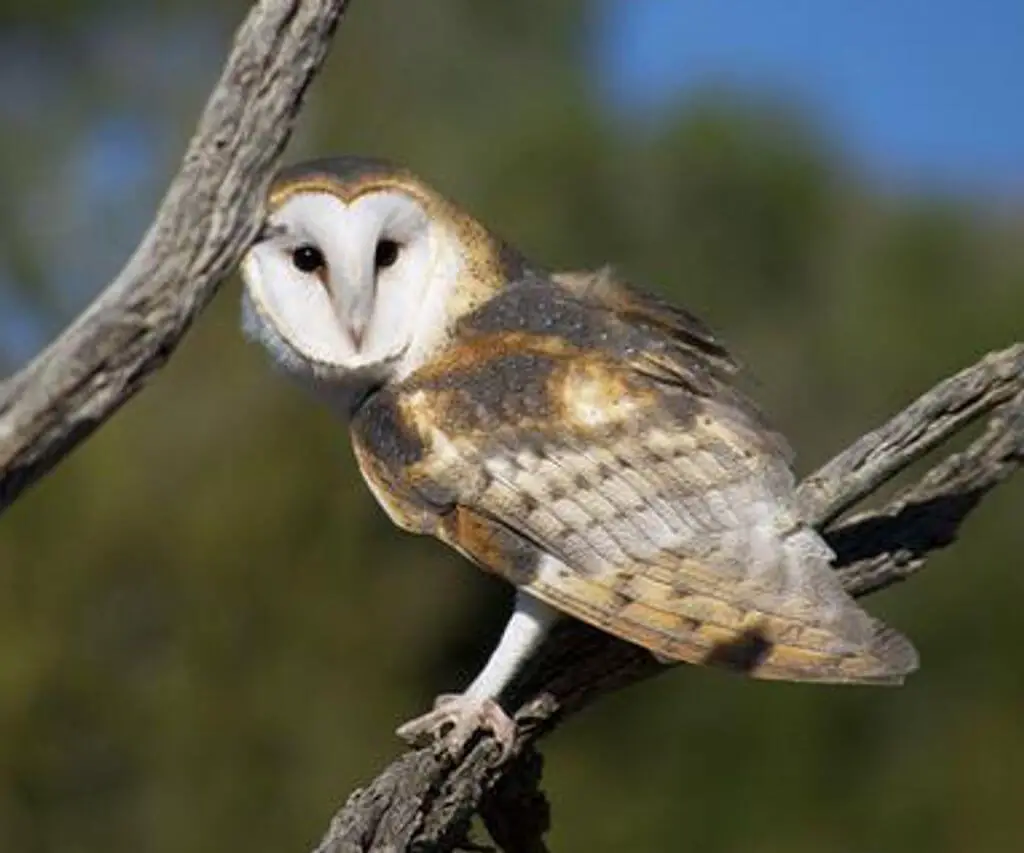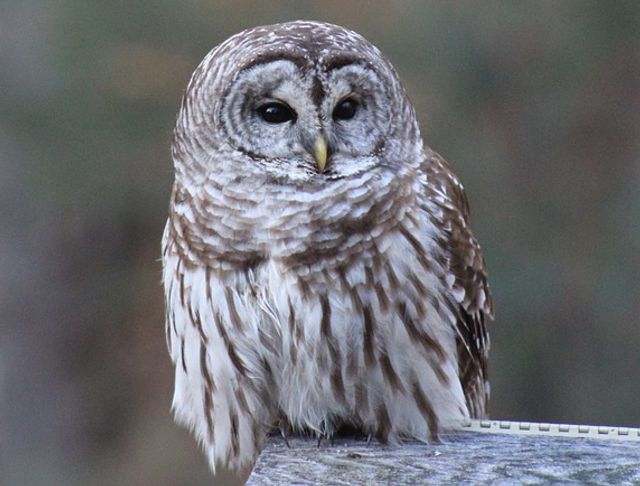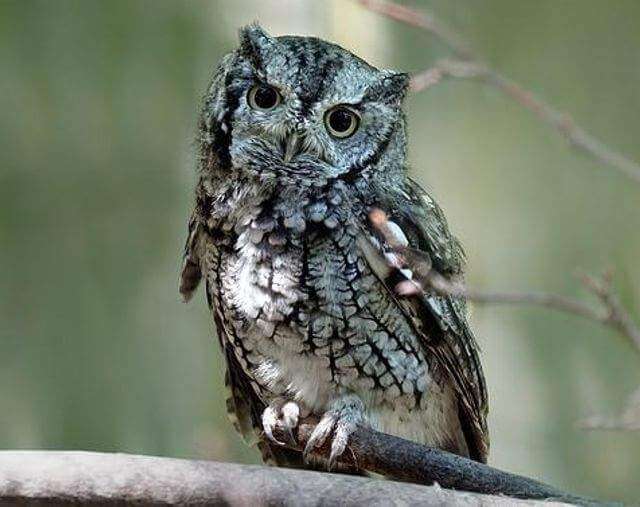Hello fellow bird enthusiasts! Are you ready to get up close and personal with the stunning owl species of South Carolina? If you’re looking for a wildlife adventure this season, then this guide is for you. In this 2023 guide, I’ll be introducing some of the most impressive owlspecies in South Carolina, sharing some tips on how to spot them in the wild, exploring their habitats and more.
Join me as we explore the wonderful world of owls in South Carolina – from tiny screech owls to large barred owls. With my help and your enthusiasm, it’ll be an unforgettable journey that will leave you amazed at these remarkable creatures. Get ready to grab binoculars, learn about owls and embark on an outdoor experience that will stay with you forever!
Types of Owls in South Carolina
Barred Owl
- Length: 16.9-19.7 in (43-50 cm)
- Weight: 16.6-37.0 oz (470-1050 g)
- Wingspan: 39.0-43.3 in (99-110 cm)
- Scientific Name: Strix varia
- Frequency of Occurrence: 3.28% (Statistic by: eBird)
- Where To Find Them: They can be found in the lower part of the state near the coast, as well as in the higher elevations of the Blue Ridge Mountains. Some specific spots where you can find these owls include Francis Marion National Forest, Sumter National Forest, and Clemson Experimental Forest.
- How to Attract: Barred Owls prefer mature forests with plenty of large trees for nesting and roosting. They also need a good source of prey, so make sure to provide some areas where mice, rats, or other small mammals can live. A water source is also important, as Barred Owls often drink and bathe in it.
General Information: The Barred owl is one of the more common owls in North America. Its range extends along the Canada and United States’ southern border to Central America. The barred owl prefers deciduous forests, but can also be found in mixed woodlands, coniferous forests, and even urban areas.
This owl hunts mainly at night, but can also be active during the day. It eats a variety of prey, including small mammals, birds, amphibians, and reptiles. Barred owls typically nest in tree cavities, but they will also use abandoned hawk or crow nests.
Great Horned Owl
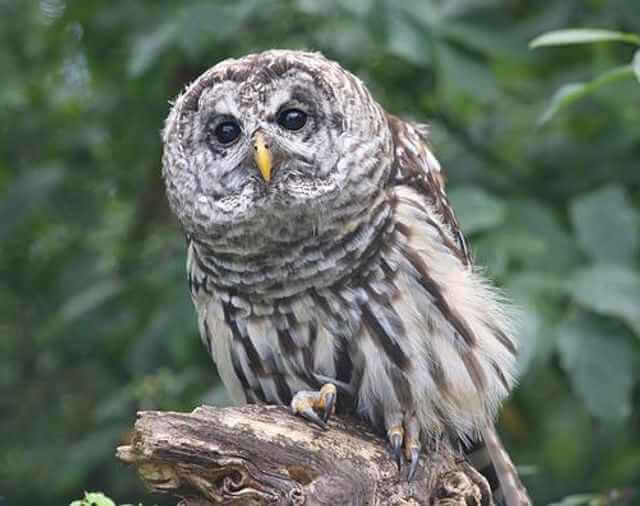
- Length: 18.1-24.8 in (46-63 cm)
- Weight: 32.1-88.2 oz (910-2500 g)
- Wingspan: 39.8-57.1 in (101-145 cm)
- Scientific Name: Bubo virginianus
- Frequency of Occurrence: 1.24%
- Where To Find Them: One of the best places to see these owls is at Santee National Wildlife Refuge. This refuge is located in central South Carolina and is home to a variety of different bird species.
- How to Attract: There are several ways to attract these owls to your property. One way to attract Great Horned Owls is by providing a nesting box. They prefer a box that is at least 12 inches wide and 18 inches deep, with an opening of 4-6 inches. The box should be mounted 8-10 feet high on a tree or post, facing east or south. Another way to attract Great Horned Owls is by providing a feeding station. They prefer a feeding station that has a platform for them to stand on, as well as a variety of food items such as mice, rats, rabbits, and quail.
General Information: Great Horned Owls are found in a variety of habitats, but they prefer dense woods or swamps. They can be found in deserts and other open areas, but they are not common there. Great Horned Owls eat mostly small mammals such as rabbits, squirrels, and rats.
They will also eat birds, lizards, and insects. Great Horned Owls nest in trees, often in the top of a tall conifer. They build a large stick nest that can be up to 2 feet across.
Related Post: 35 Fun Facts About The Great Horned Owl (Detailed)
Eastern Screech Owl
- Length: 6.3-9.8 in (16-25 cm)
- Weight: 4.3-8.6 oz (121-244 g)
- Wingspan: 18.9-24.0 in (48-61 cm)
- Scientific Name: Megascops asio
- Frequency of Occurrence: 0.4493%
- Where To Find Them: Some popular spots include the Francis Marion National Forest, Congaree National Park, and the Savannah National Wildlife Refuge. You can also find them in smaller parks and nature preserves scattered around the state.
- How to Attract: Eastern screech owls can be attracted to your backyard by providing them with a nesting box and some food. The best way to provide them with a nesting box is to mount it high up on a tree or pole where it will be out of the reach of predators.
To attract eastern screech owls, you can offer them some food items like mice, rats, crickets, mealworms, or bird seed.
General Information: Eastern screech owls are typically found in eastern North America, ranging from as far north as southern Canada to as far south as northern Florida. They inhabit a variety of habitats, including forests, woodlands, wetlands, and even urban areas.
These owls mainly eat small mammals, such as rodents, but they will also eat birds, insects, and other invertebrates. Eastern screech owls usually nest in tree cavities, but they will also use old buildings or other artificial structures.
Barn Owl
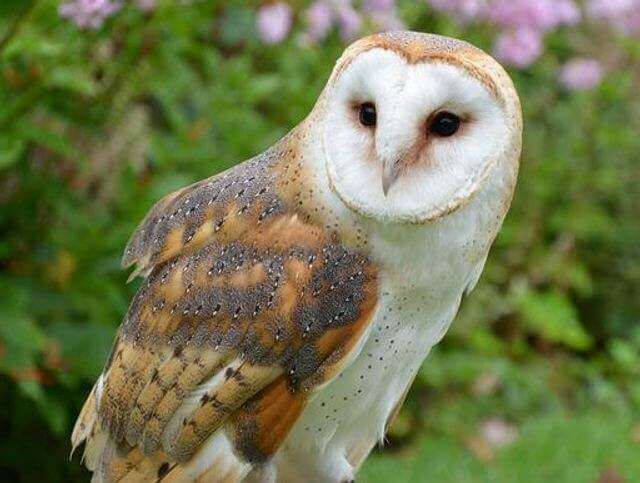
- Length: 12.6-15.8 in (32-40 cm)
- Weight: 14.1-24.7 oz (400-700 g)
- Wingspan: 39.4-49.2 in (100-125 cm)
- Scientific Name: Tyto alba
- Frequency of Occurrence: 0.1762%
- Where To Find Them: Barn-owls can be found in many different spots or locations in South Carolina. Some popular places to find them include the Congaree National Park, the Francis Marion National Forest, and the Oak Ridge Greenway.
- How to Attract: People often want to attract barn owls to their property to enjoy their beauty and watch them hunt. There are a few things you can do to make your property more appealing to barn owls. One is to create a nest box for them. You can buy a pre-made box or make your own. The box should be about 18”x18”x24” and have an opening on the side or top for the owl to get in and out. Another way to attract barn owls is to provide a food source for them.
General Information: The Barn owl is a common and widespread bird in North America. It is found in open country across the continent, from southern Canada to Mexico.
The barn owl typically lives in open habitats such as fields, meadows, deserts, and marshes. It hunts mostly at night, preying on small mammals such as rats, mice, and rabbits. Barn owls build their nests in tall trees or on cliff faces, where they lay 2-4 eggs.
Short-eared Owl
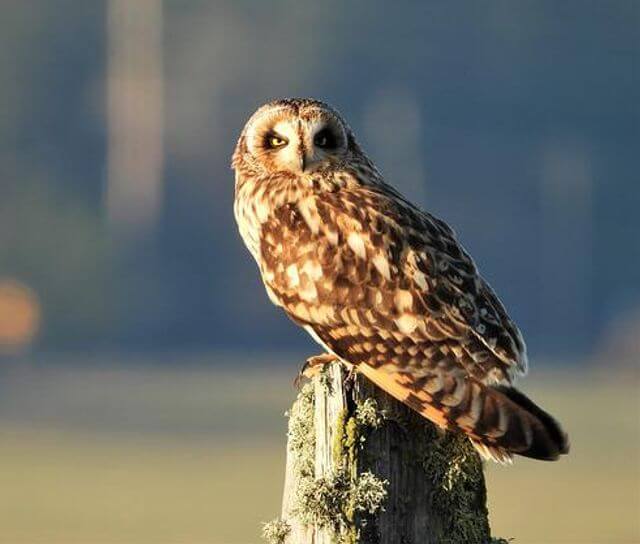
- Length: 13.4-16.9 in (34-43 cm)
- Weight: 7.3-16.8 oz (206-475 g)
- Wingspan: 33.5-40.5 in (85-103 cm)
- Scientific Name: Asio flammeus
- Frequency of Occurrence: 0.0483%
- Where To Find Them: Some specific spots or locations where they have been observed include the Savannah National Wildlife Refuge, Francis Marion National Forest, and J. Strom Thurmond Lake. They are also occasionally seen in other parts of the state, such as the Clemson Experimental Forest and Congaree National Park.
- How to Attract: Short-eared owls can be attracted to your backyard by putting up a nest box and by providing a food source such as owl pellets or rodents. The best time to put up a nest box is in late winter or early spring, before the birds have started nesting. You can also attract these owls by putting out a dish of water and some fresh rodent bait.
General Information: The Short-eared Owl is a medium-sized owl that ranges in length from 13.5 to 17″ inches and has a wingspan of 33.5 to 40.5″ inches. These owls can be found in open fields, prairies, marshes, and grasslands. They prefer to live in areas where there is plenty of ground cover for them to hunt in and nest.
The diet of the Short-eared Owl consists mainly of small mammals such as mice, voles, and rabbits. They will also eat birds, reptiles, amphibians, and insects. These owls nest on the ground in areas that provide good cover from predators.
Burrowing Owl
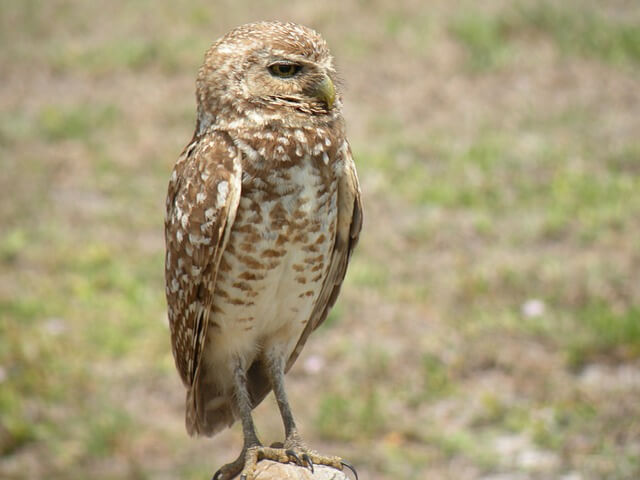
- Length: 7.5-9.8 in (19-25 cm)
- Weight: 5.3 oz (150 g)
- Wingspan: 21.6 in (55 cm)
- Scientific Name: Athene cunicularia
- Frequency of Occurrence: 0.0018%
- Where To Find Them: Some good spots to see Burrowing Owls in South Carolina include the Francis Marion National Forest, the Savannah National Wildlife Refuge, and the ACE Basin National Wildlife Refuge.
- How to Attract: Creating a hospitable habitat for burrowing owls is easy. You can provide a depression in the ground for them to nest in or you can install a nesting box. Be sure to place the box on a pole so that predators cannot reach it. The owls will also need an area where they can hunt rodents and other small prey. Providing a water source is also beneficial. You can attract burrowing owls to your yard by placing out food such as mice, rats, or quail. You can also offer them live insects such as crickets or mealworms.
General Information:
The burrowing owl is a small, long-legged owl found throughout open landscapes in North America. A wide variety of habitats are used, including prairies, grasslands, agricultural fields, rangelands, and deserts. Burrowing owls also use semi-arid areas with scattered sagebrush, cactus, and Joshua trees.
This species feeds mainly on insects but also takes small rodents, amphibians, and reptiles. They hunt from perches or by hovering over open areas before dropping down onto prey. They usually nest in the abandoned burrows of other animals such as ground squirrels, prairie dogs, badgers, or coyotes. They will also use holes in trees or artificial nest boxes if available.
Related Post: Really Cool Burrowing Owl Facts That Will Amaze You!
Northern Saw-whet Owl
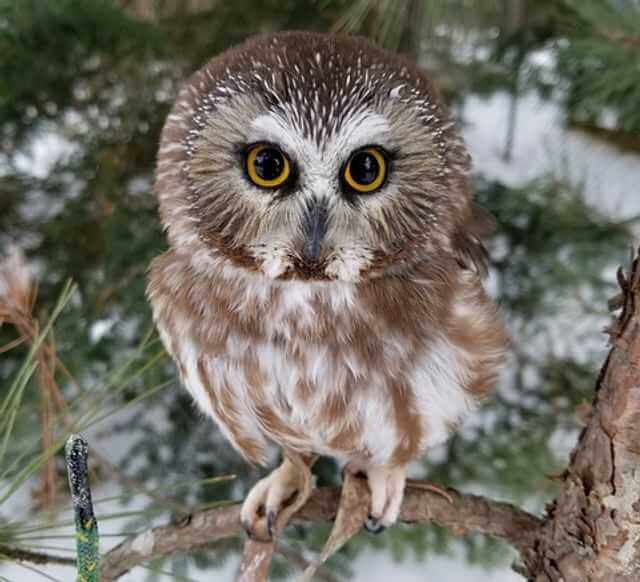
- Length: 7.1-8.3 in (18-21 cm)
- Weight: 2.3-5.3 oz (65-151 g)
- Wingspan: 16.5-18.9 in (42-48 cm)
- Scientific Name: Aegolius acadicus
- Frequency of Occurrence: 0.0012%
- Where To Find Them: The best spots to see these owls are at the Francis Marion National Forest and the Clemson Experimental Forest.
- How to Attract: Northern Saw-whet Owls can be attracted to your backyard by putting up a nesting box and providing a water source. You can also put up owl decoys to help attract these birds.
General Information: The Northern Saw-whet Owl is a small owl found in North America. They have a range that extends from Alaska to Nova Scotia, and as far south as Texas and Florida. Saw-whets are forest birds and prefer dense woods with plenty of large trees.
They eat mostly small mammals, but also birds, reptiles, and insects. Saw-whets build their nests on the ground, in tree cavities, or even in abandoned buildings. In winter they may migrate to southern states or Mexico.
Related Post: What is the Smallest Owl in North America?
Snowy Owl
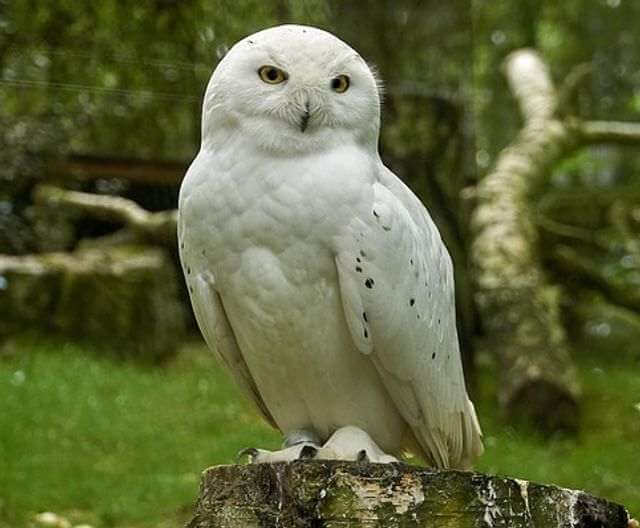
- Length: 20.5-27.9 in (52-71 cm)
- Weight: 56.4-104.1 oz (1600-2950 g)
- Wingspan: 49.6-57.1 in (126-145 cm)
- Scientific Name: Bubo scandiacus
- Frequency of Occurrence: 0.0010%
- Where To Find Them: Some of the most popular places to spot a Snowy Owl include the Francis Marion National Forest, the Congaree National Park, and the ACE Basin. These are all great locations to try and spot a Snowy Owl during the winter months.
- How to Attract: They are not always easy to spot, but there are ways to attract them, so you can see these magnificent birds up close.
One way to attract a Snowy Owl is by providing them with a place to perch. This could be something as simple as a tall tree or a post. You can also try putting out some food for the owl, such as mice, rabbits, or fish. If you live in an area where Snowy Owls are known to reside, you may want to put up a nest box, so they have a place to roost.
General Information: Snowy owls are one of the most widely distributed owl species in the world. They can be found in the arctic tundra of Eurasia and North America. In North America, their range extends from Alaska to Maine. They typically inhabit open country, such as tundra, grasslands, and wetlands. However, they have been spotted in a variety of habitats, including forests and urban areas.
Snowy owls feed on a variety of prey, including small mammals, birds, and fish. They hunt by perched atop a high perch and scanning the ground for prey. They also fly low over open areas in pursuit of prey. Snowy owls build their nests on the ground near well-hidden spots. The nests are constructed of sticks and lined with feathers. Females lay 2-10 eggs per clutch.
Related Post: 48 Fun Facts About Snowy Owls (with Photos, ID & Info)
Long-eared Owl
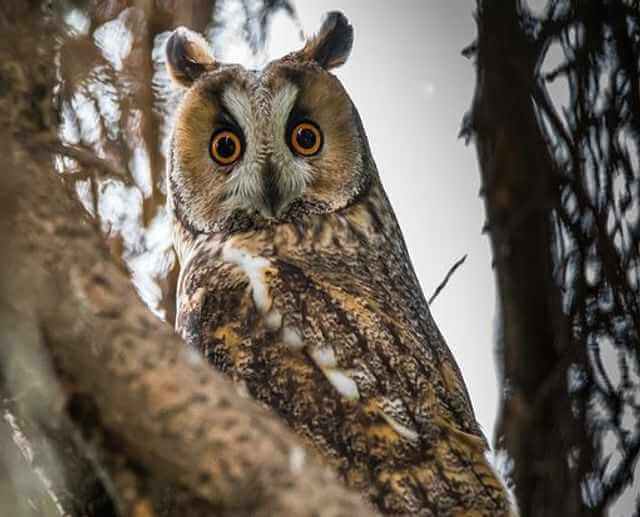
- Length: 13.8-15.8 in (35-40 cm)
- Weight: 7.8-15.3 oz (220-435 g)
- Wingspan: 35.4-39.4 in (90-100 cm)
- Scientific Name: Asio otus
- Frequency of Occurrence: 0.0002%
- Where To Find Them: One such spot is the Congaree National Park near Columbia. The park has several miles of hiking trails that wind through a mature bottomland hardwood forest. This is prime habitat for long-eared owls, and the birds can often be seen perched in tall trees along the trails. Another good spot to see long-eared owls is upstate near Clemson University.
- How to Attract: To attract these owls to your backyard, you can provide a safe place for them to perch, such as a large tree or tall pole. You can also put up a nest box or two in an open area near some trees. Providing a food source, such as mice or rats, will also help attract these owls to your backyard.
General Information: The long-eared owl is a medium-sized owl that ranges in length from 14 to 16″ inches and has a wingspan of 35 to 40″ inches. They are typically light brown or gray in color with darker markings on their head and wings. Long-eared owls inhabit North America, Europe, Asia, and North Africa.
They reside in a variety of habitats including woodlands, meadows, farmland, and marshes. These owls primarily eat small rodents such as mice and voles, but they will also consume other small mammals, birds, amphibians, reptiles, and insects. Long-eared owls nest in trees or on the ground near a body of water.
Related Post: 82 Common Birds in South Carolina – Ultimate Field Guide!
Frequently Asked Questions
What is the most common owl in South Carolina?
The most common owl in South Carolina is the Barred Owl. Barred Owls can be seen at a frequency of occurrence of 3.28%. They live in deciduous and evergreen forests, as well as woodlands near water. They are also known to inhabit suburbs and rural areas.
What owls are common to South Carolina?
What owls are common to South Carolina? The most common owl found in South Carolina is the Barred Owl. Other owls that can be found in the state are the Great Horned Owl, Eastern Screech Owl, and the Saw-whet Owl. Seeing an owl is rare, but if you are lucky enough to spot one, take a picture or just enjoy the sighting!
Where do owls live in South Carolina?
There are many species of owls that live in South Carolina. Barred owls, great horned owls, and northern saw-whet owls are some of the most common ones. They can be found in a variety of habitats, from forests to marshes to urban areas.
Barred owls usually live in deciduous forests, where they can find plenty of tall trees for nesting and hunting. They are also known to inhabit open woodlands, swamps, and even orchards.
Great horned owls typically live in open areas with scattered trees and bushes. They can be found in deserts, prairies, forests, and even urban areas.
Northern saw-whet owls prefer dense forests with lots of tall trees and understory cover. They are usually found near water sources like rivers and swamps.
What does seeing a barred owl mean?
Seeing a barred owl is considered to be a good omen, symbolizing protection and happiness. Barred owls are often associated with wisdom, so seeing one may be interpreted as a sign that you are on the right track and making wise decisions.
As a spirit animal, the barred owl can help you find your voice and use it for the greater good. If you need to find courage in difficult times, calling on the power of the barred owl may be just what you need.
What does an owl in your backyard mean?
An owl in your backyard could symbolize a number of things. It could be a sign that you need to pay more attention to your own intuition and instincts, as owls are often associated with wisdom.
It could also be a sign that you need to start paying more attention to the spiritual world, as owls are often seen as messengers from the spirit world.
If you have been experiencing any problems in your personal life, an owl in your backyard could be a sign from the universe that it’s time to start making some changes.

